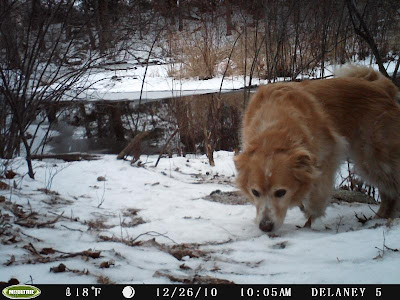Dan writes:
I spent Labor Day weekend camping with friends at a PATC cabin outside
Shenandoah National Park in western Virginia. The cabin logbook had
many reports of black bear sightings on the roads and trails around the
area. I spent some time exploring the trails around the cabin, and was
able to photograph several types of bear sign. Once I figured out the
food preferences of the local bears, and their marking habits, it became
fairly easy to predict where to look for sign.
All apple trees showed climbing scars and broken branches. I never
found a classic "bear nest", but did find apple and black cherry trees
with broken limbs that had been bent back toward the center of the crown.




Cedars along the trail were usually swiped and showed diagonal claw marks.

Bear scat consisted of black cherry seeds, or a smaller seed from a
fruit I was not able to identify.

Painted wooden sign posts on trails away from the cabins were massively
scarred with significant bite marks - I found cheek hair on several of
these posts. In one photo, I've placed sticks into the dot-dash pattern
caused by the bear's canine teeth (thanks, Sue Morse!)



Smaller diameter trees (3-5" diameter) with painted blazes usually
showed an old bite mark directly on the painted blaze. It took a while
to notice this pattern, but once I started looking for it, EVERY blazed
tree of a certain diameter had an old bite scar right on the blaze.
I examined many mature beech trees, and never found climb marks. I
found one old black cherry that had been climbed, and a mature maple
that showed clear climb marks all the way up the trunk.



Based on the sign I observed, I'll concentrate my future bear tracking
on fruit trees (apple and cherry), on easily-markable cedar, and on
human markings (sign posts and blazed saplings) along the trail.

















































